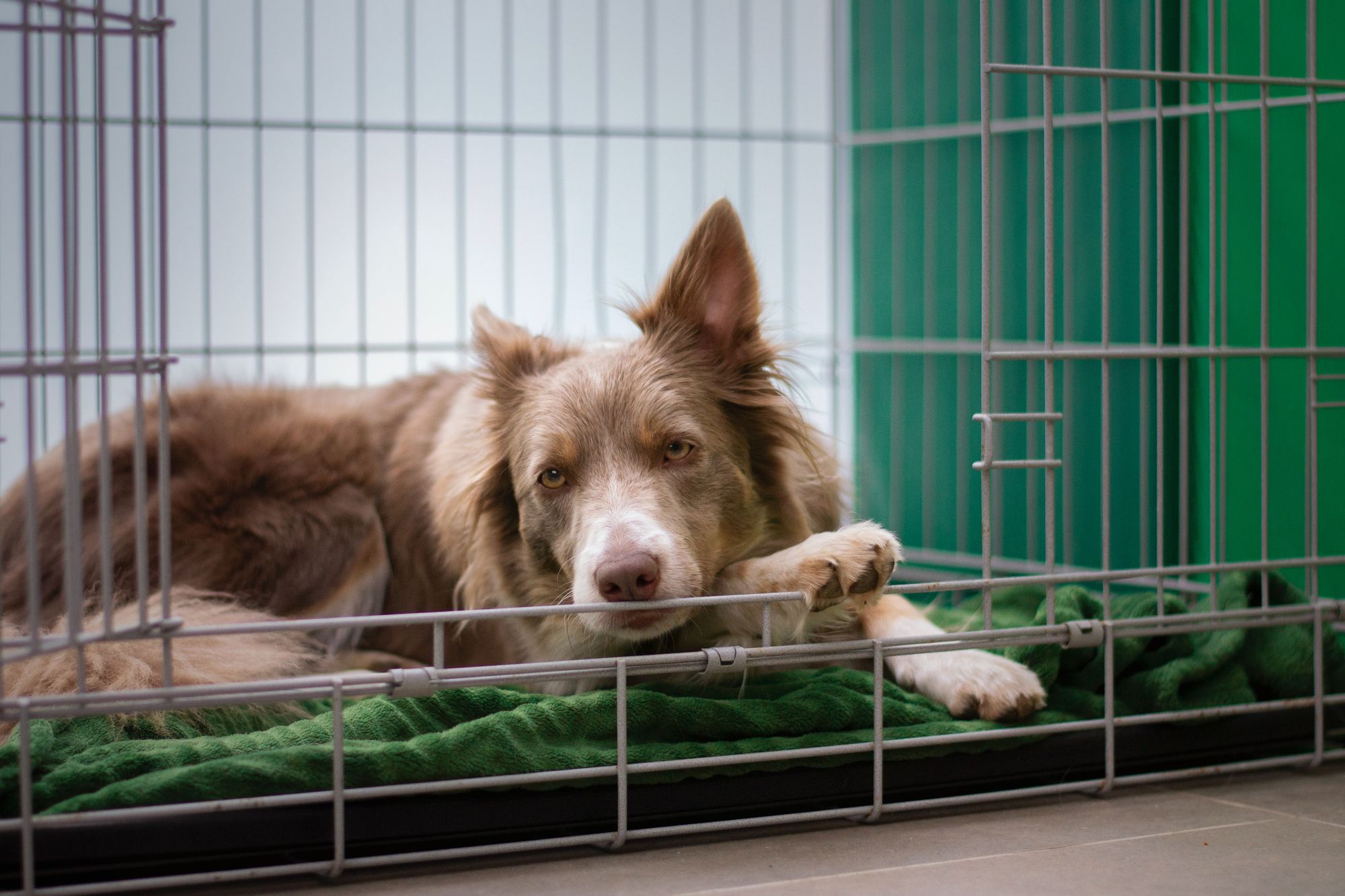A crate can be a great way to create a private, safe haven for your dog. Crate training can also be helpful when house training, traveling, and teaching your dog how to be alone. That being said, not all dogs are immediately comfortable in their crate and will resort to crying, whining and even barking when left alone. To help you navigate this common crate training challenge, this article will explain:
- Why dogs cry in their crate
- Tips to get your dog to stop crying when you put them in their crate
- What other pet parents are asking about dogs crying in their crate
Let’s get started!
Why do dogs cry in their crate?
There are a few reasons why dogs cry in their crate:
- They need to go to the bathroom. This is especially true at night when a dog may have been in their crate for a few hours and needs to go outside to take care of their business. Remember, when it comes to puppies, they can generally only hold their pee 1 hour for every month of age (e.g. 4 month old puppies can hold their pee for ~4 hours - give or take depending on the individual pup) and may need to go out at night to relieve themselves.
- You’ve left them in their crate too long. An adult dog that’s totally comfortable in a crate shouldn’t be there more than 6-8 hours, and puppies never more than a few hours. Leaving your dog in a crate longer than this can be mentally and physically detrimental.
- They’re stressed or scared in the crate. This can be true for dogs of all ages, especially if the crate training process was rushed or your dog has separation anxiety. In this situation, your dog may start crying immediately after being put in the crate. You should interpret their crying as your dog telling you to let them out; they’re stressed and/or afraid.
Tips for getting your dog to stop crying when you put them in their crate
If your dog starts crying when you put them in their crate, take a step back in the crate training process. To help your dog feel better about the crate, and eventually be able to stay inside for longer periods of time, we recommend breaking crate training down into 3 phases:
- Phase 1 - Establishing the crate as a happy place. Leave the crate door open and drop treats, toys and other surprises inside. You want your dog to explore the crate on their own and develop good feelings about the space.
- Phase 2 - Learning to relax inside the crate. Use your “Down” cue to get your dog to lie down in the crate. Once they’re lying down in the crate, slowly feed your dog treats for up to one minute.
- Phase 3 - Closing the door and building duration over time. Use your “Down” cue to get your dog to lie down in the crate. Then, place a treat between their paws and close the door for one second. Immediately open the door and give your dog another treat. Leave the door open for 10 seconds then repeat the exercise 5-10 times. With practice, and as your dog becomes more comfortable, you can increase the amount of time the crate door is closed.
To fully realize the benefits of crate training, work through the above phases at your dog’s speed and:
- Focus on the way your dog feels when they’re in the crate. You want to ensure you’re creating good feelings about being in the crate.
- Make the crate a place that your dog can enjoy when you’re home.
- Never force them to be in the crate or leave the door closed longer than they’re comfortable with.
If you move faster than your dog is ready for (signs would be barking and crying when they're in the crate) you run the risk of your dog developing a negative association with the crate, and then it will become increasingly harder for them to go in the crate.
Lastly, if you need to leave your dog when you go out, and they're not ready to be in the crate, try a baby gate + the crate. Essentially use the baby gate to limit the area of the house your dog can explore, and have the crate (with the door open and fun rewards scattered inside the crate) available to your dog within the space they're confined to by the baby gate.

Frequently asked questions about dogs crying in their crate
Should I let my dog cry in their crate?
No. If your dog is crying in their crate they either need to go to the bathroom, have been in there too long, or are stressed about being in the crate. You should take them out of their crate.
What should I do if my dog cries in their crate at night?
If your dog is crying in their crate at night, they probably need a bathroom break. Take them out for a walk and give them an opportunity to pee/poop. To limit the need for bathroom breaks at night: take your dog out for a pee/poop 2-3 hours before bed, give them their last drink of water after you take them out, and give them one last opportunity to pee/poop 5 minutes before bed.
Does putting a blanket over a dog crate help?
Covering your dog’s crate can reduce visual stimulation when in the crate and help them calm down. This being said, if you put a blanket over the crate, and your dog cries, you should take them out of their crate and take a step back in the crate training process.




